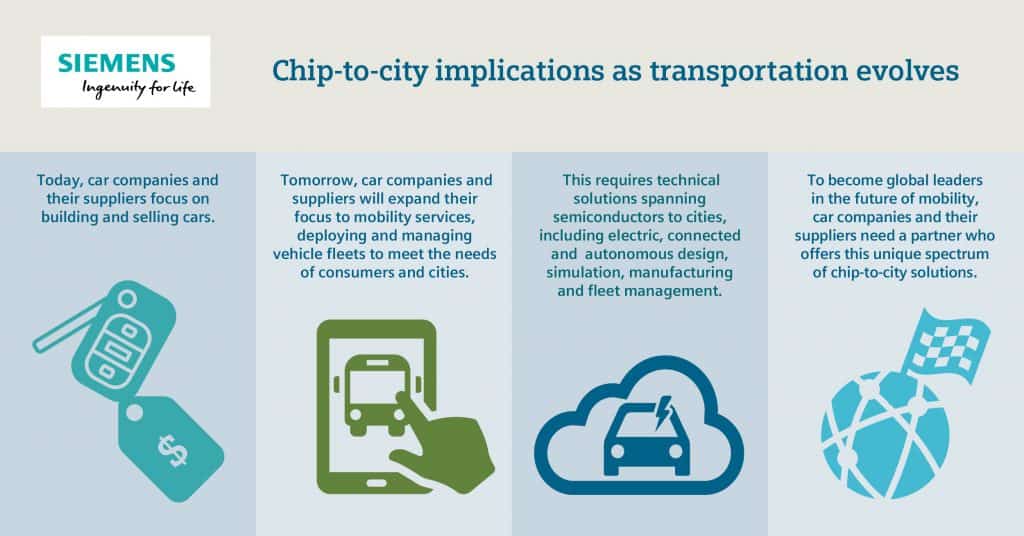By Andrew F. Macleod, Siemens
If you’re working on anything related to self-driving cars, you’re likely pondering the trade-off between what’s technically possible and socially feasible. Example: what do you do if the posted speed is 25 mph while the local norms are to travel at least 30 mph? Obey the law and annoy the drivers around you? Or follow the herd and risk the ire of local law enforcement and officials who are key stakeholders in the ongoing testing and roll-out of driverless solutions?
Expect this tension to be a fact of life over the next many years if not more. The reason for hedging on time-frame is that after years of optimistic predictions about the approaching zero hour when autonomous Level 4/5 vehicles will arrive, it’s become clear that human-driven vehicles will be the dominant modality for the foreseeable future. Note that I didn’t say human-driven cars. Micromobility, including e-bikes and scooters, has exploded onto the scene, capturing media attention, VC funding and a scurry of acquisitions by established OEMs. Indeed, micromobility today is reliably described as a “revolution,” much as self-driving cars were 15 minutes ago.
Transit authorities and cities loom especially large as well, given the macro trend of urbanization around the globe. Officials like Seleta Reynolds, general manager of L.A. Department of Transportation, are emerging as prominent foils to the tech industry on Twitter and elsewhere.
All this churn is nested within the biggest shift of all, the outlines of which have been apparent for some time, especially relevant in the strategies on display throughout the transportation ecosystem, from carmakers to suppliers to venture capitalists. Namely, in the years ahead, more of the value in moving people and goods around will come from expanding mobility services and managing vehicle fleets than from building and selling cars.
Sensors are key technology enablers in story, critical in everything from by-now relatively basic ADAS features like basic adaptive cruise control (ACC), automatic parking and blind spot monitoring, to the more robust prototype autonomous vehicles with full-stack technology, including multiple sensor modalities and robust sensor fusion and path planning capabilities, powered by advanced machine learning and AI. And of course sensor applications are event in a host of smart-city, from intelligent traffic lights to increasingly instrumented and connected public transportation systems, all the better for delivering up true multimodal services to end users via smartphones.
Even micromobility depends on an expanding array of sensors. Today it’s the availability of cheap torque and various other motor-related sensors, GPS and gyros that have supercharged that segment. In the future, on-board cameras might help keep dockless scooters and e-bikes safe from vandalism.
One reason this current mobility moment is so exciting is that, broadly speaking, the industry is transitioning from mostly off-the-shelf sensing hardware and software to bespoke solutions specifically tailored to self-driving and other applications. An example is the astonishing advances in imaging chips to meet the requirements for spatial and angular resolution, dynamic range and bit depth that are central to seeing all around the car in all conditions. There are loads of city-related computer vision application, too.
All this means new demand for nanometer- to kilometer-scale solutions: creating chips for AI algorithms; designing converging electric, connected and autonomous vehicle systems, each loaded with sensor applications; full vehicle and city simulations of real-world traffic scenarios; advanced digital manufacturing supporting the already proliferating number of vehicle types; and IoT support of fleet management and shared mobility services. And more.
In other words, solving the toughest problems in transportation involve a chip-to-city portfolio and perspective — the kind that’s on display at AutoSens in 2019. Siemens are happy to be the lead sponsor of this year’s Detroit event in May. We hope to see you there.








